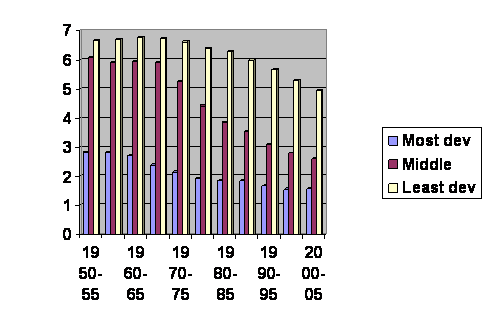April 12, 2010
Maria Sophia Aguirre PhD
The Catholic University of America
Department of Business and Economics
620 Michigan Ave. NE
Washington, DC 20064
202 319-5000
Dear Professor Aguirre:
I appreciated your contribution to the documentary “Demographic Winter.” The economic impact was well laid out, but there seemed to me to be another element. If a bond that will be worth $100 a year from now it is worth less than $100 now. So a bond that will be worth nothing in a year, and assuming everybody knows it, will be worth nothing now. The same logic should hold for a vast amount of investment. Well if the world were going extinct in a year, the nothing is worth anything now. We still would like to eat of course but investments would make little sense.
Nobody believes we are going extinct next year, not in the foreseeable future. After all that’s us we’re talking about. But the market is rather unsentimental. And the market sees all. This is what the market sees when it looks at birth rates:
These are UN numbers for the past 50 years. It is birth rates broken down by developed, less developed and least developed regions. Everybody fifty and younger – everybody who is ever going to have children essentially – is reflected in the graph.

The vertical axis is the average number of children born per woman. The horizontal axis gives the dates of the surveys.
Yes, birth rates are going down. To the extent that this represents rational choices in the face of limited resources, well and good. But look what happens when we cut and paste a bit:

It is not easy to tell where the edits are. In other words, we are already global. The whole world is on the same course, just at different points along the line. Since the line follows a rigid, unvarying course, that means birth declines are all being caused by one and only one thing. Since we can be at different points, this cause must be something that is not affecting the whole world at some point in time. It is something that, at least for the past fifty years, transcends time.
And it ends in tears.
Nobody sees it, but the market in reconciling an incredible number of transactions around the world begins to respond long before investors get edgy about the biology. Of course the market goes up and down because there is more than one thing affecting it.
One might take comfort in the fact that the curve seems to level off. But it levels off below replacement, meaning the population decline when it gets well started will be ever steeper unless we address the fundamental cause. In vitro fertilization (IVF)works about half the time, and there is some evidence that birth rates are rising in the richest societies, I suspect because of IVF. And there is reason to suspect that IVF will not always be possible; look at the baseline it is struggling against.
The cause, as you said in the documentary, has to do with family life. But it is not just the nuclear family. It is the extended family dating back multiple generations. This may seem utterly incredible, but the bald fact is that people have more babies when they marry kin. And the effect on fertility of marrying non kin accumulates over generations. The evidence, massive in numbers and from multiple independent sources, is gathered as best I can do it on nobabies.net. The best introduction at this time is probably the March 25, 2010 entry.
Have a look at it. Let me know what you think. I post my letters on the same website and eagerly look forward to posting replies when the come in. So far I must say that when all the ostriches are scared the view above the sand level gets kind of monotonous.
Sincerely,
M. Linton Herbert MD
There have been 3,860 visitors so far.
Home page.

